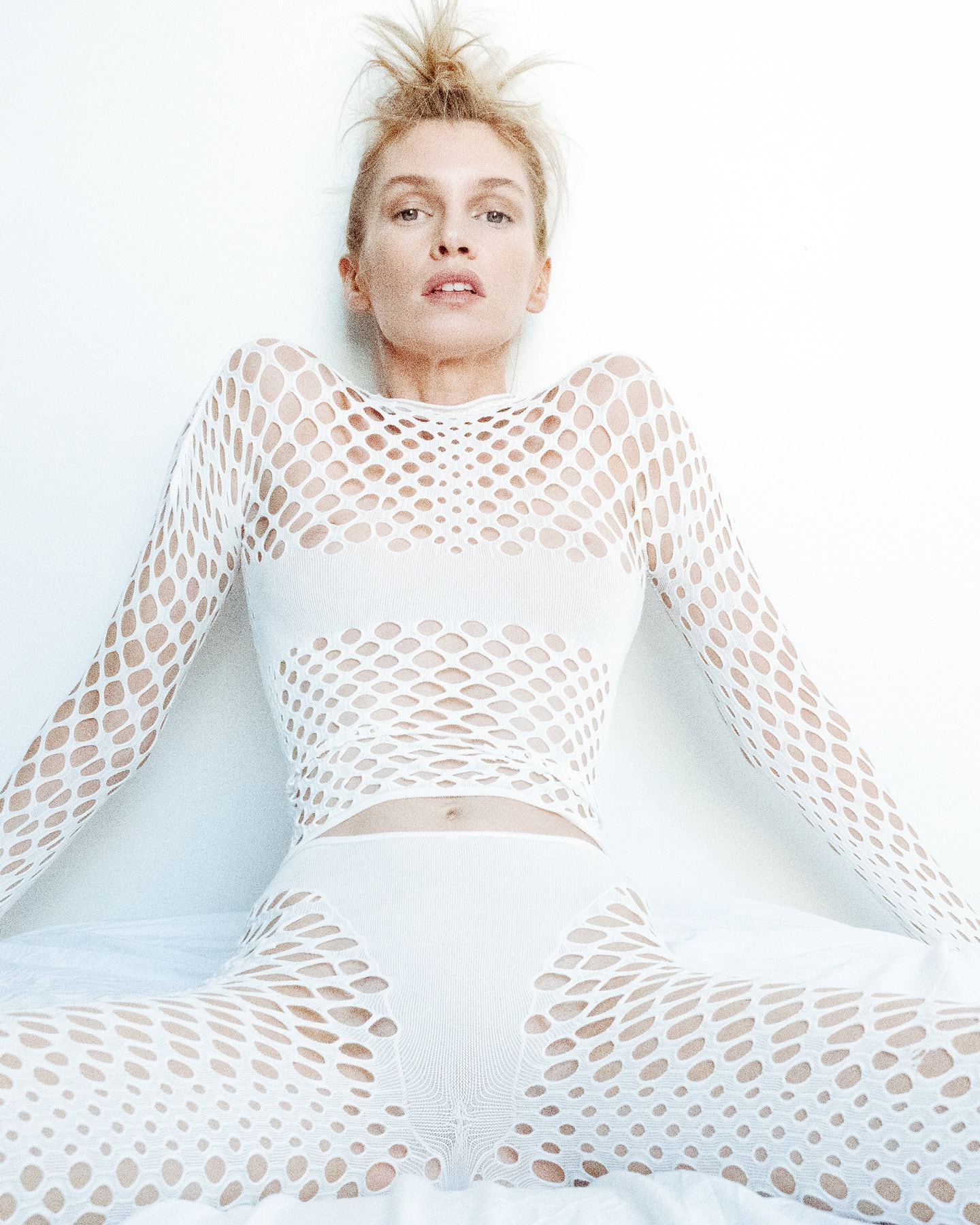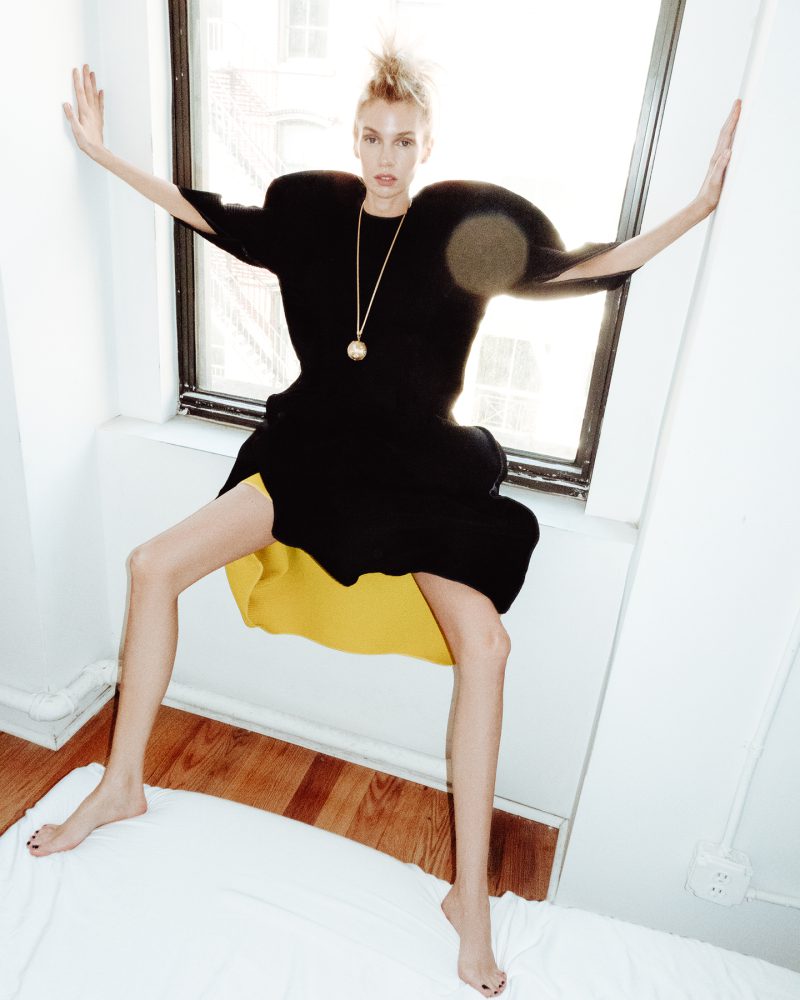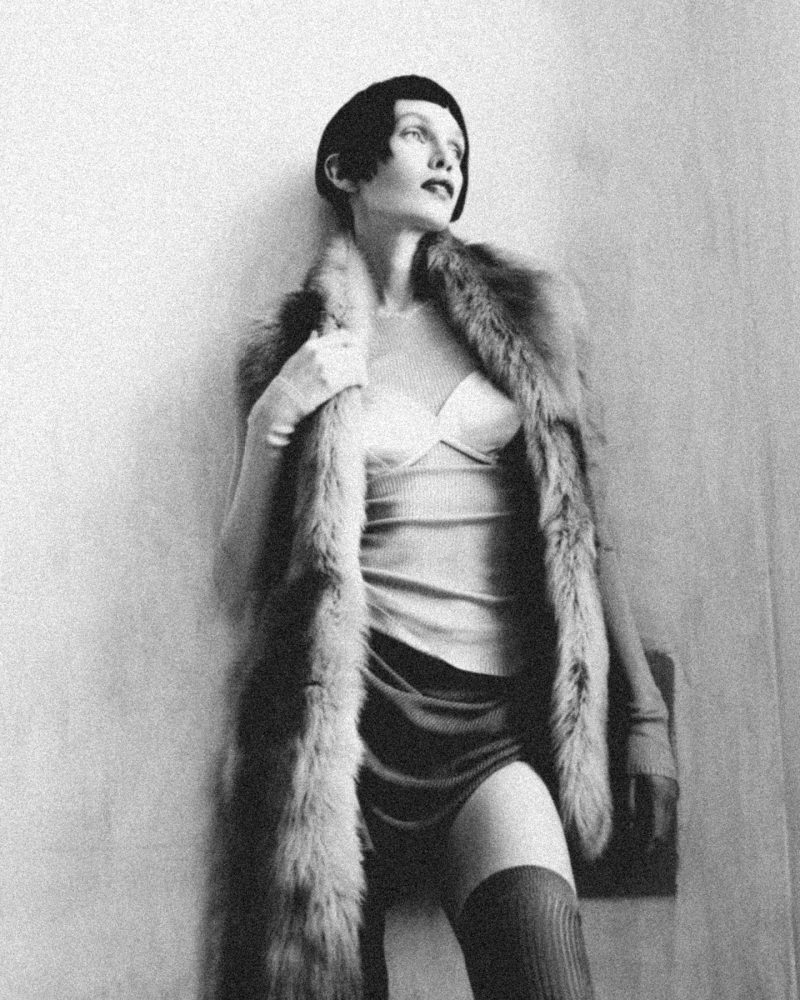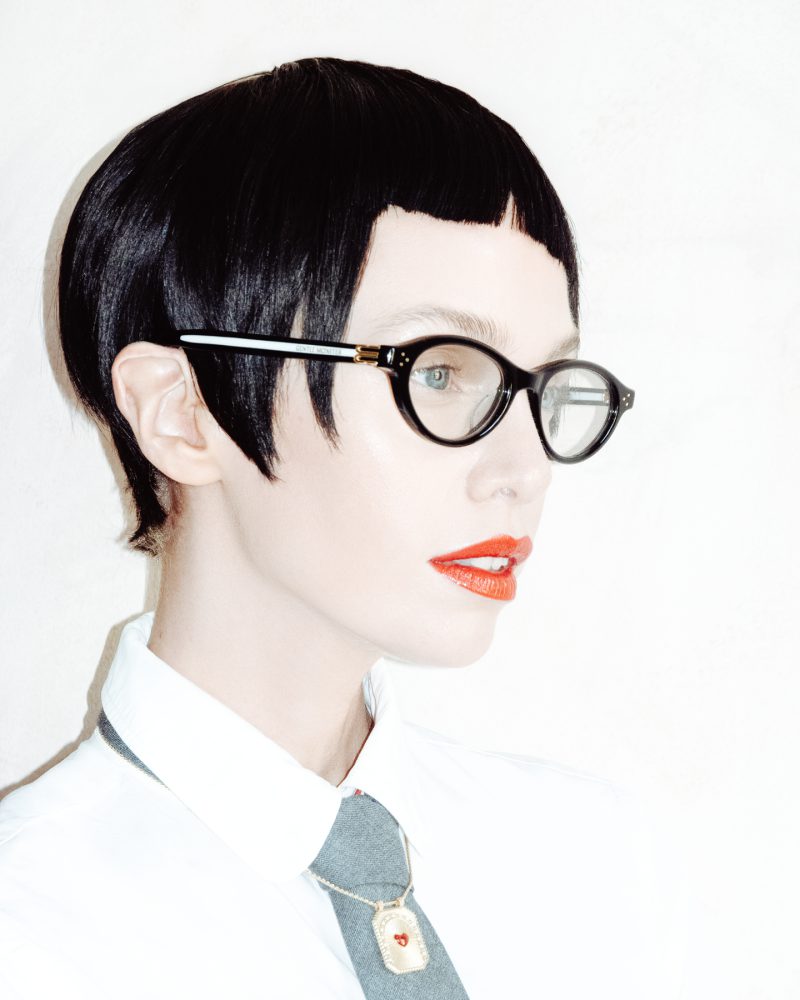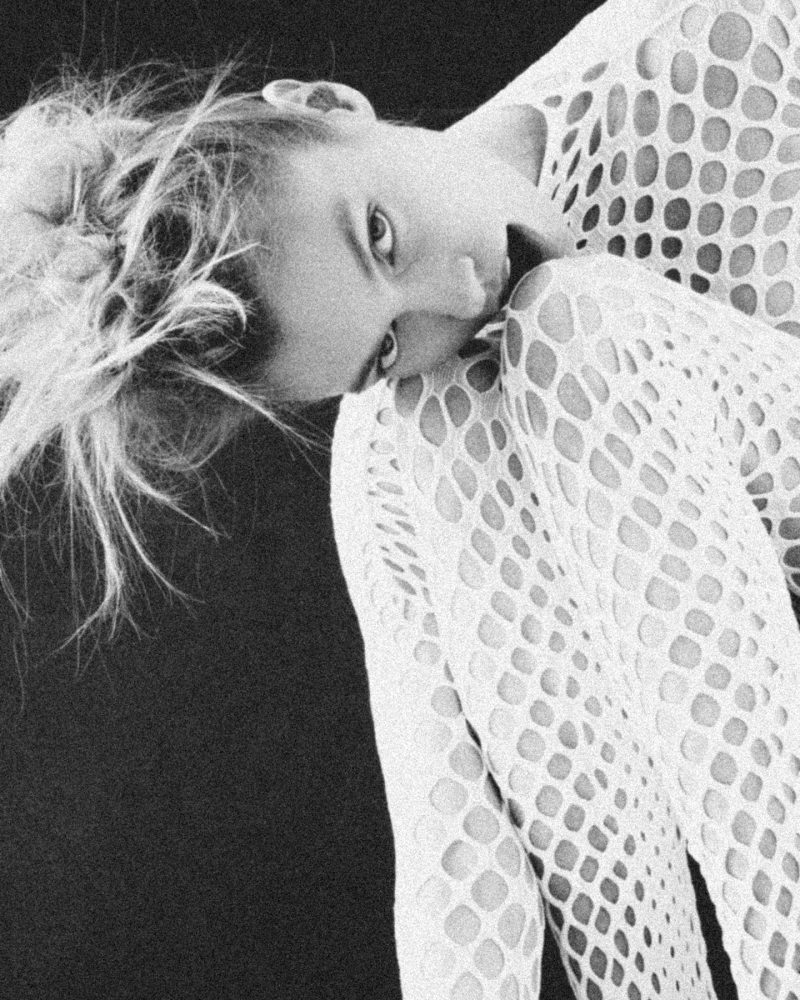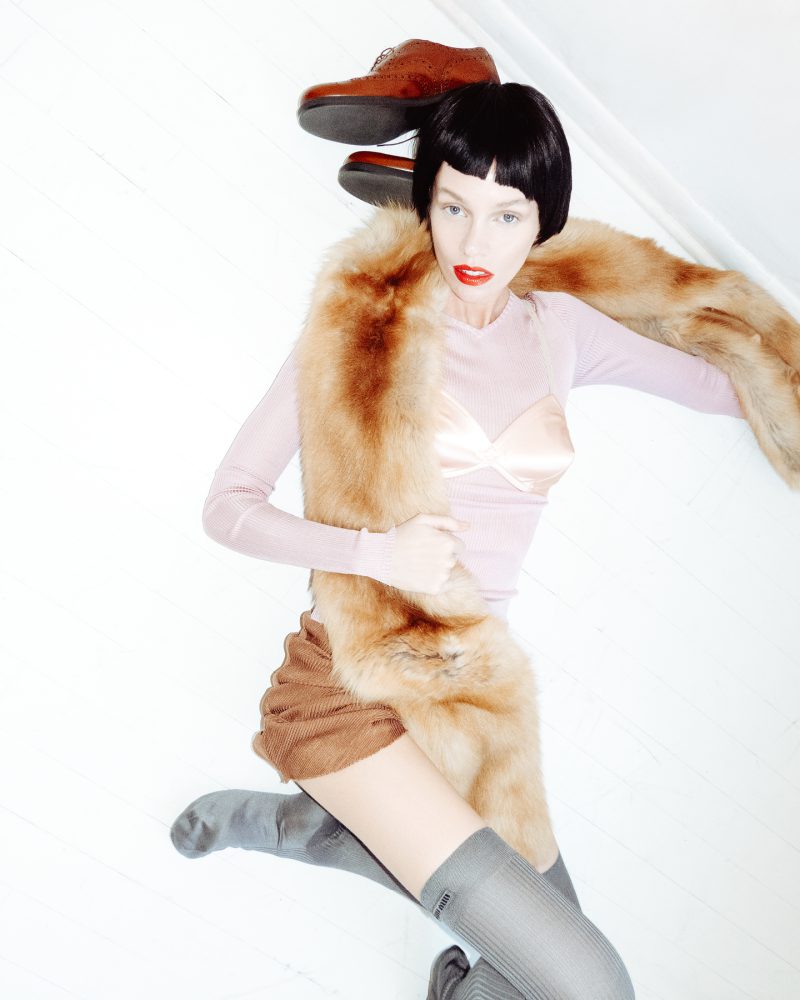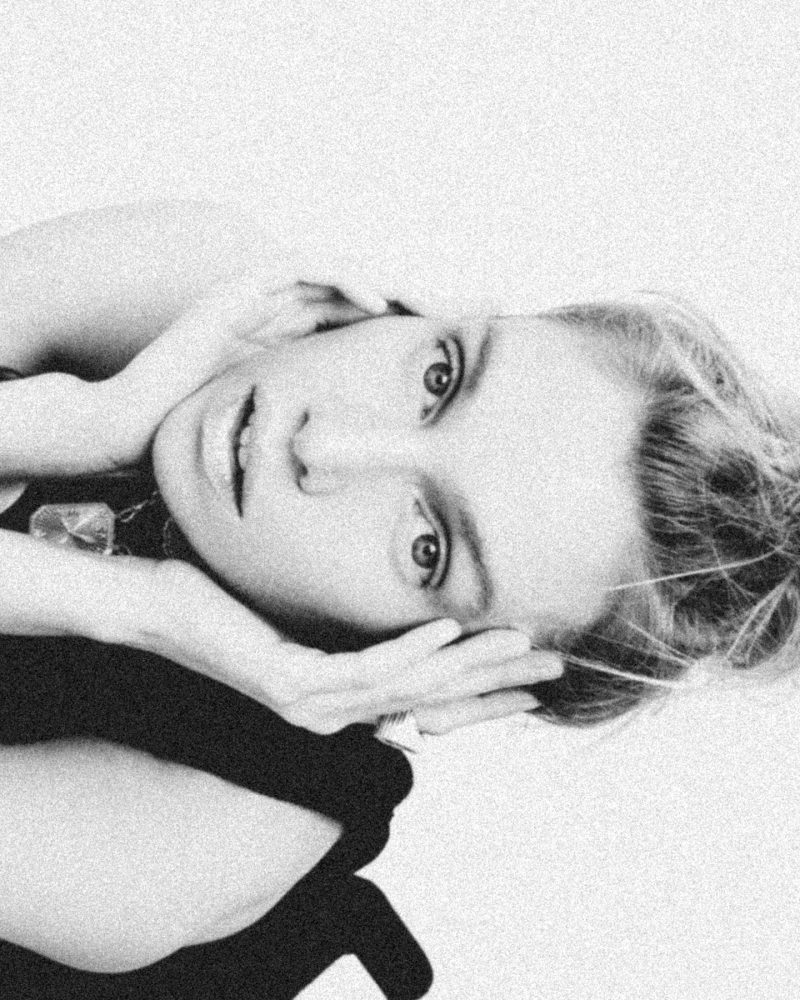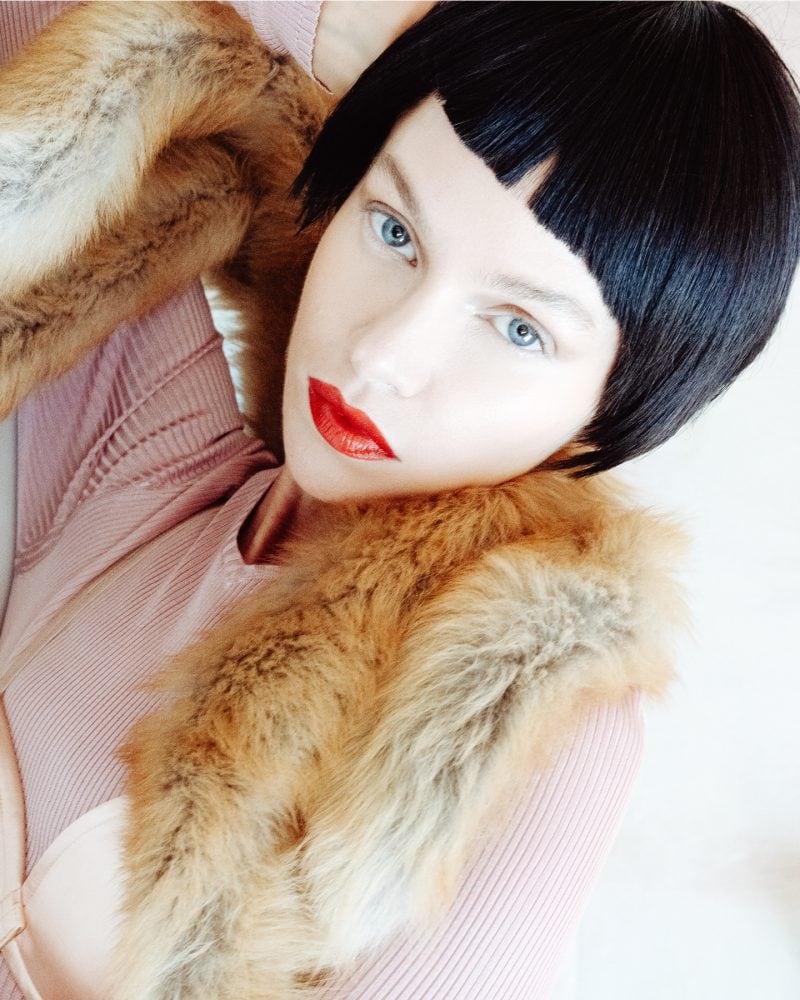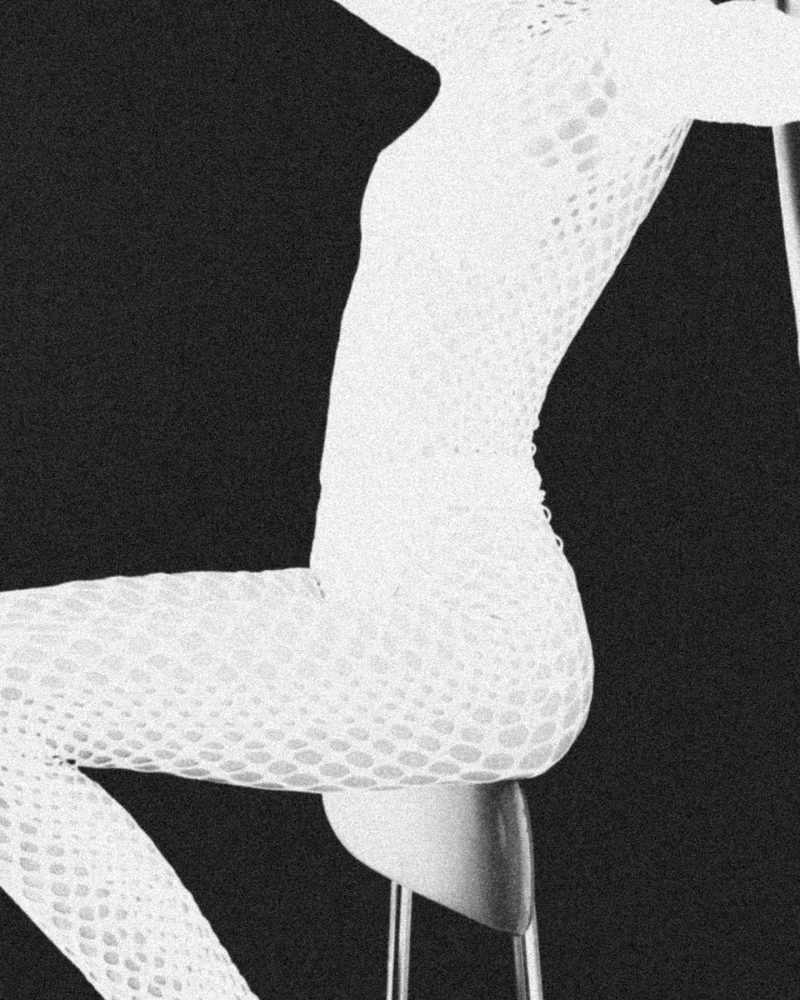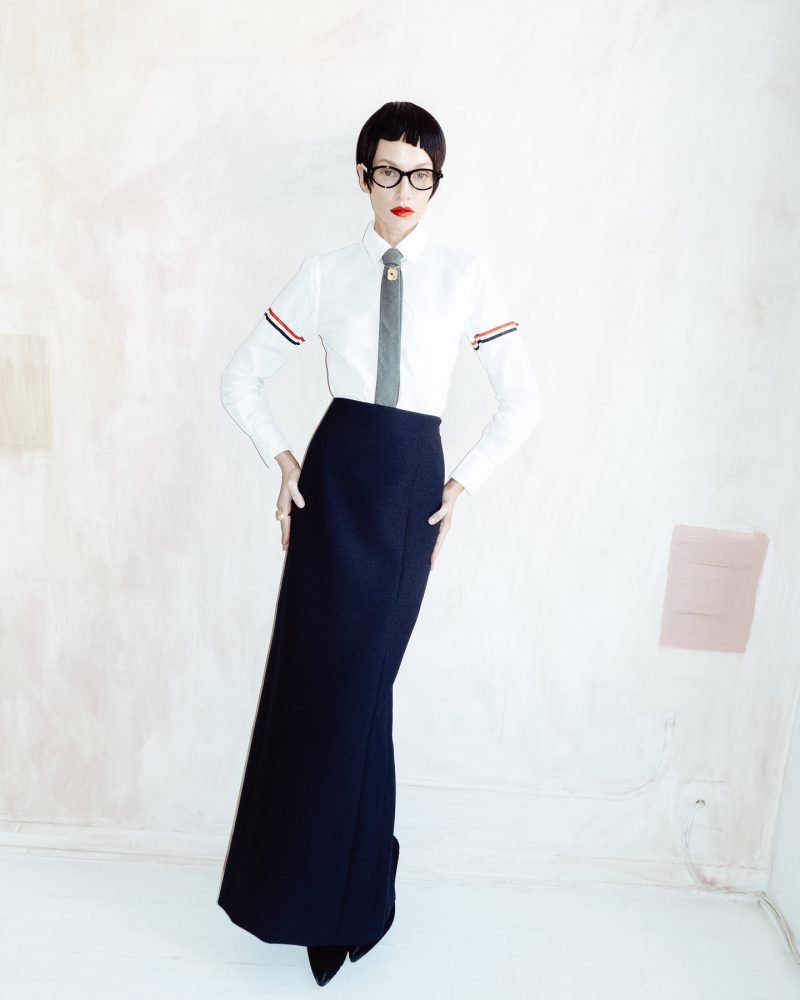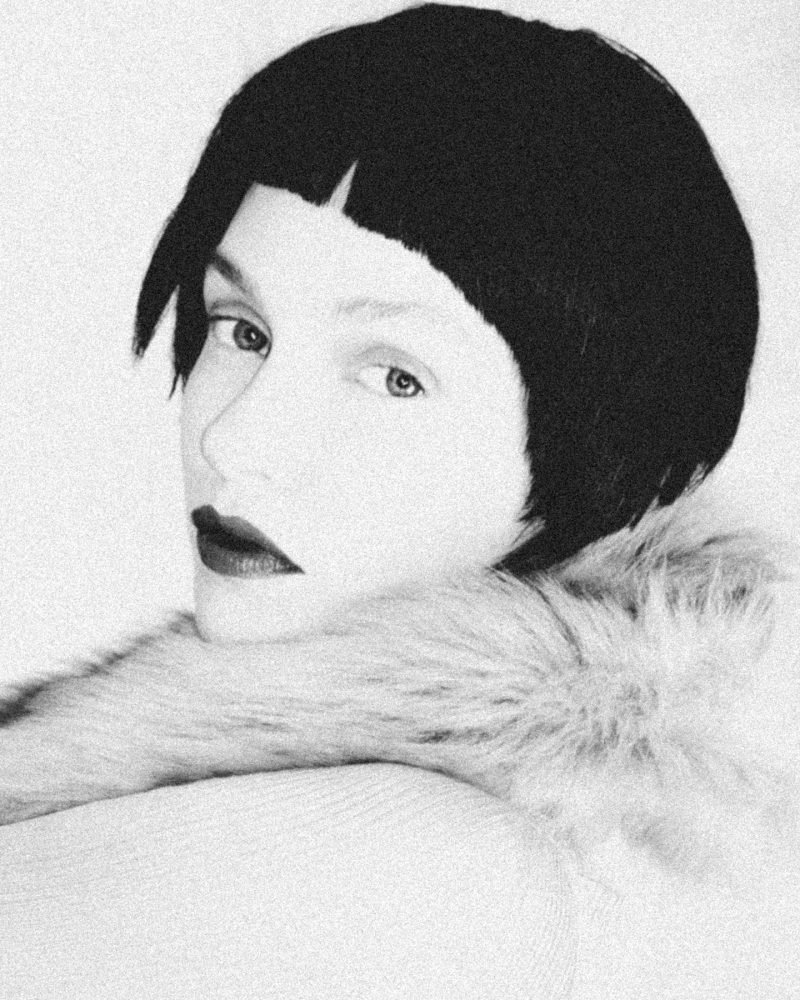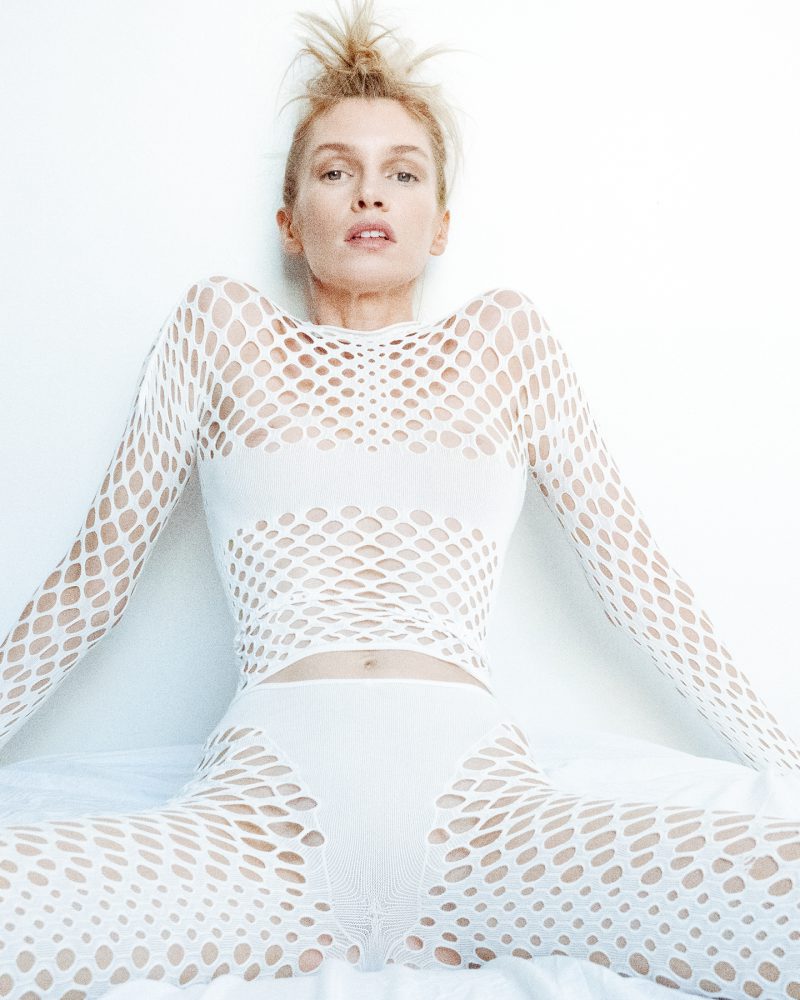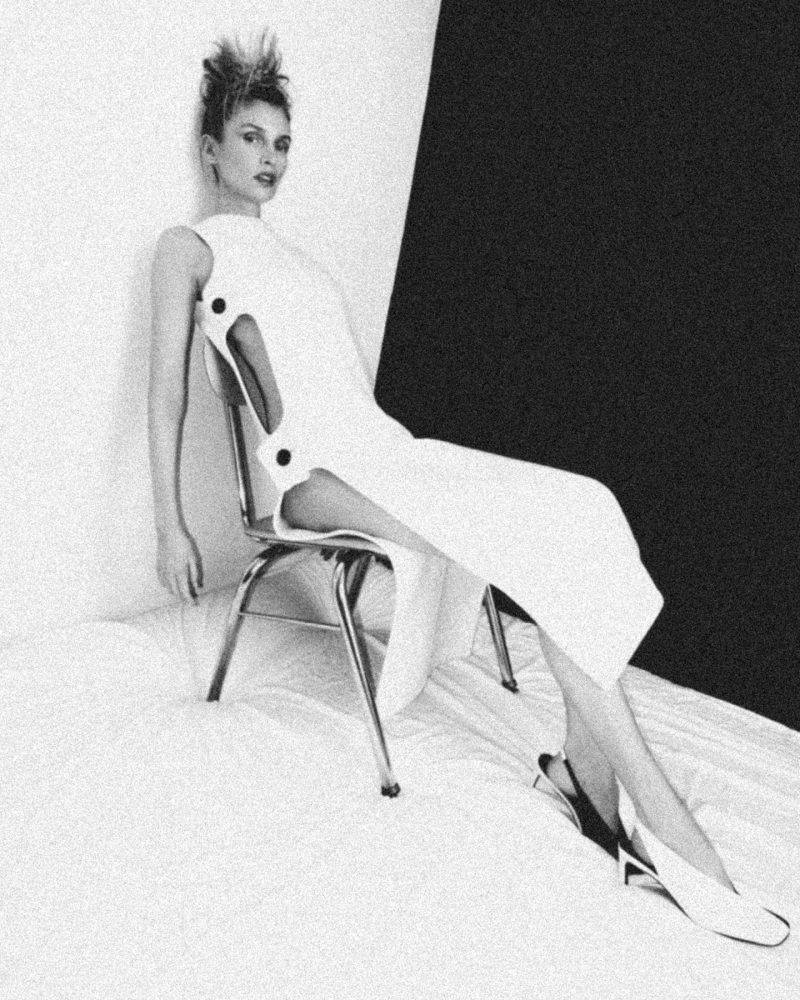The body, the female body, has always been more than flesh and bones. A metaphysic site of projection, musing, imagination and desire—it is a living canvas. A waving cloth we get to catch, and wear as we embrace life and its experiences.
For supermodel Stella Maxwell, it is a place that constantly inhabits different realms; different clothes, places and characters unlocking new pathways to interpretation, thoughts and critique. Under the lens of photographer Kat Irlin, Stella becomes a Miu Miu muse in pink satin, suddenly androgynous in Thom Browne’s shirt and tie, a contemporary goddess in moving black, and finally, vulnerable yet strong in marble texture and intricacies.
It is 10 a.m. in New York, summer’s approaching, and away from international runways and red carpets Maxwell poses in front of a dainty Kat Irlin. A photographic, yet personal invitation to observe the nuances of femininity, the optics of one’s personality, and how all is captured.
It is no surprise that when I asked Maxwell and Irlin what their relationship to their body was, as well as to femininity, they gave me answers that ultimately conflux together. ‘As women, I think that we naturally embrace both the feminine and the masculine, and the more we do so the less important it becomes to separate the two. says Stella. ‘The body though, it needs to be in balance with my mind; that is essential,’ she continues.
Femininity, masculinity and the body—a transcendental union that under the womanly eye of Irlin’s portraiture becomes magnetic. ‘I do have a distinct and visible feminine perspective, and it differentiates me from other photographers. I pride myself on that,’ she explains.
The British model and Russian photographer have both spent enough years in the fashion industry to recognize its potential to tell stories, depict feelings and move within and beyond borders—whether cultural, physical or geographical.
‘The freshest water doesn’t stay still, and I think the same applies to life, to stories, and fashion,’ says Maxwell. ‘I’m from the UK, but I was born in Belgium, then moved to New Zealand, and now I live in the US. I’ve never really considered how that movement might have shaped the way I think, but maybe it has. All our experiences become part of who we are. I know that I love moving in front of the camera, interacting with it and with the clothes. And of course, the clothes are the most important part, because as we know, it’s all about the frock,’ she giggles.
But is it all about the “frock”? Commercially, yes. Beyond accessories, women’s fashion has long revolved around apparel. Dresses, gowns, and made-to-measure garments are designed to channel visual fantasies under the promise of making one look beautiful, feel confident, and, in the words of the legendary Valentino Garavani, soignée. Photography, then, becomes a fundamental medium in the effort to translate these fantasies into something tangible.
I ask Irlin when and how she first approached photography. ‘I was born and raised in St. Petersburg, Russia, and moved to New York in 1994. My first career was in finance, but I always loved photography, and eventually found my way to it—and never looked back.’ She explains that growing up in such a culturally rich city gave her the sense that she ‘had an eye for it,’ though she didn’t recognize it as a worthy profession until later in life—after she had seen enough fashion, art, and architecture to understand there was a way to capture them that was uniquely her own.
‘With Stella, I felt she was a strong enough subject on her own—she is iconic, and the story builds itself around her,’ says Irlin. It is an emblematic relationship between model and photographer, in which she captures not only beautiful fashion but also the emotions behind Stella’s presence. Sensuality, fearlessness, and confidence are tested—and revealed—through the exchange between two women and a camera.
One stands in front of the camera, the other behind it—together architecting a celebration of the multifaceted ways of being a woman, and of the many characteristics that femininity can embody through fashion. ‘I’ve always felt comfortable both in front of and behind the camera. I love photography and I love modeling; they’re both powerful, beautiful forms of expression,’ Stella tells me, posing in what feels like one of her most stripped-down and authentic selves.
Stella moves around the set with the ease of someone at home, her presence both assured and chameleonic. With each change of hair, makeup, shoes, and dress, she becomes another version of herself, story after story unfolding within the same body. More than flesh and bone, more than mannequin, she is fluid, molecular, hybrid, sexy. She is multitudes—and in that multiplicity, womanhood itself.
